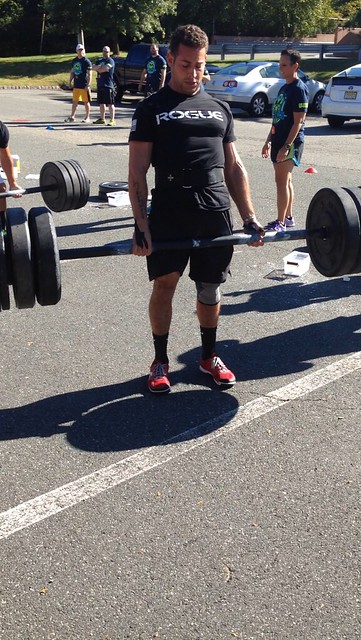Fitness:
Overhead Squat 3-3-3-3-3
Performance:
Snatch Balance 1-1-1-1-1
Post loads to comments
______________
5 Sets of:
5 Heavy Chin-Ups
5 High Box Jumps
Make the chin-ups as hard as you can while still maintaining a neutral head position at the top
The box jump isn’t a max height jump. Work up to a height that challenges you but is still a few inches below what you could maximally do. No misses.
______________
In teams of 2-3, do a plate pinch carry around the block, alternating when someone has to break.
 Alex H gets set up to go overhead
Alex H gets set up to go overhead
- CFSBK Sweatpants are now in stock. Pick a pair up for $35 at the Front Desk!
- Good luck to Aileen H, and Kate R on the Staten Island Half Marathon today. Is anyone else running it???
- Congratulations to Mike O on his 36:20 10K (that’s a 5:51 avg pace and 17:49 5K time) and Megan D on her 43:39 10K. (7:02 avg pace and 21:33 5K) Mike Finished 23rd and Megan 103rd out of 4,114 total competitors. Today they’re competing in the Central Park Duathalon
___________________
Thus ends back off week. Please let us know what you thought of the last cycle! We’ll start a new 6 week training cycle tomorrow.




